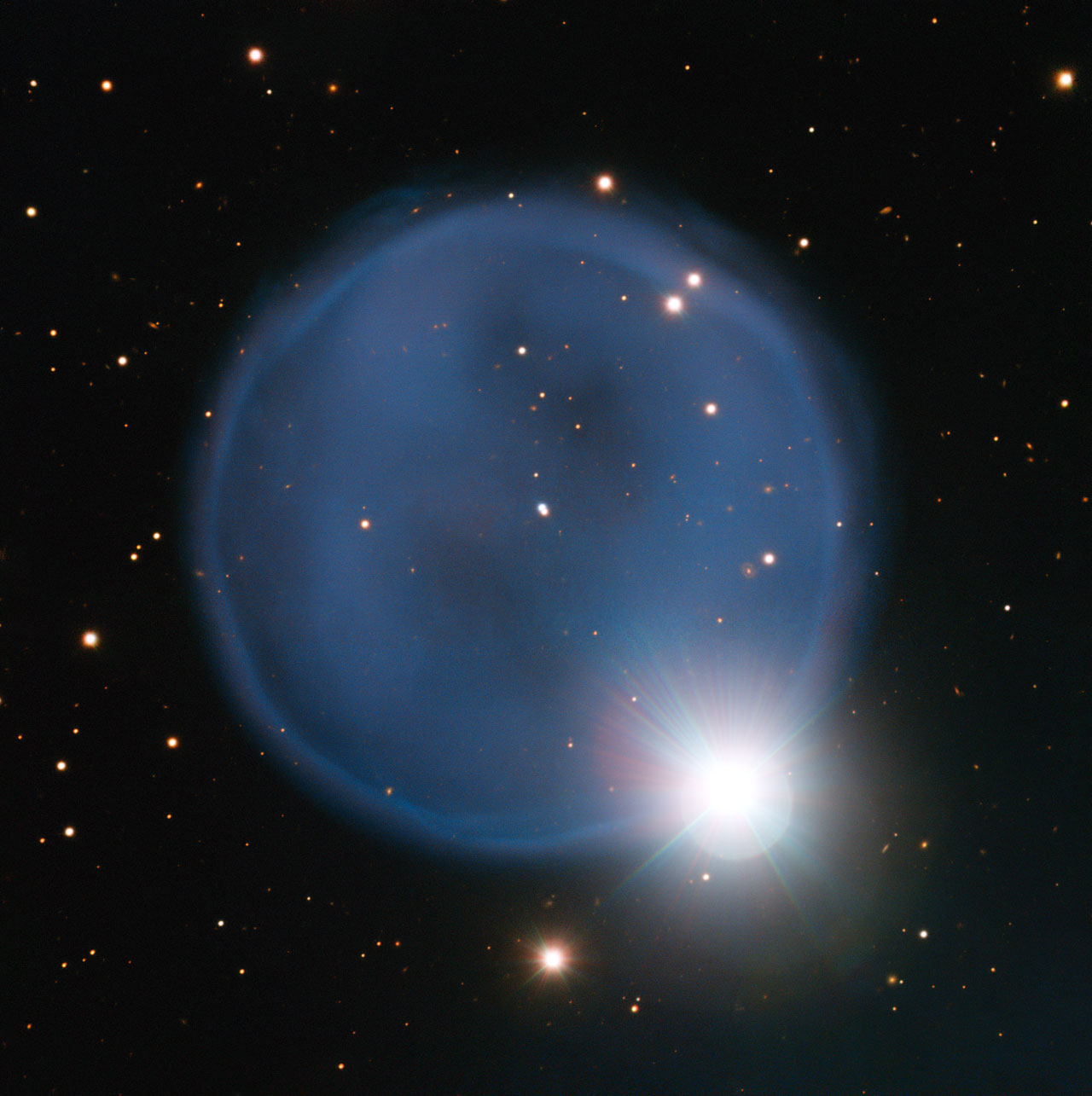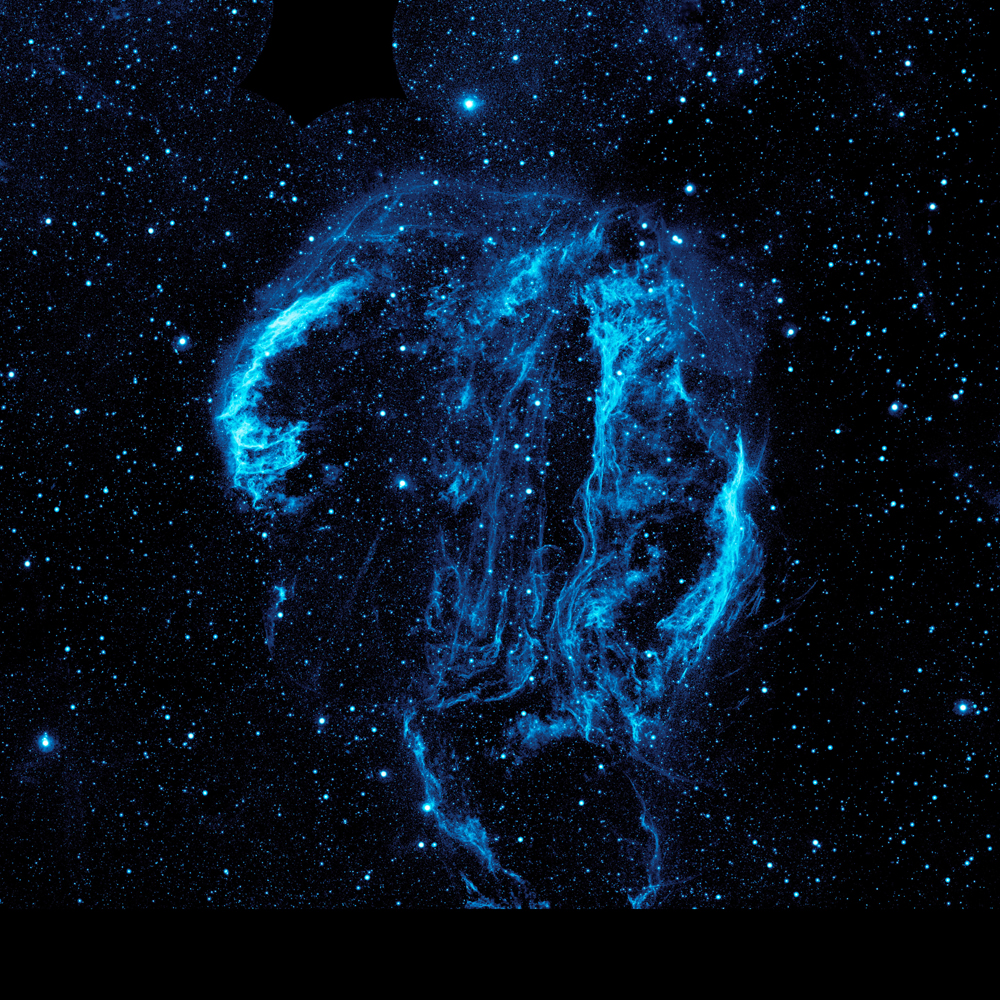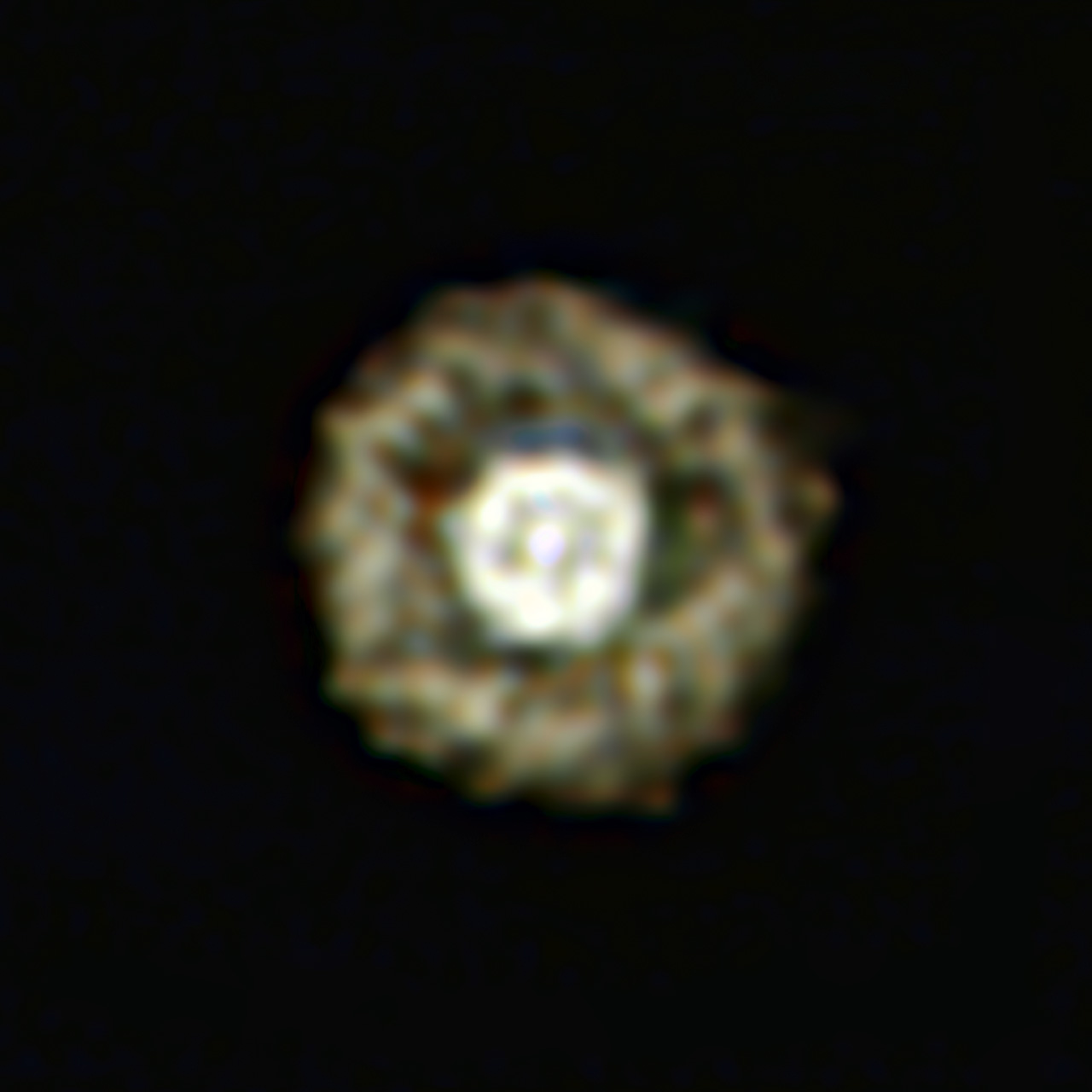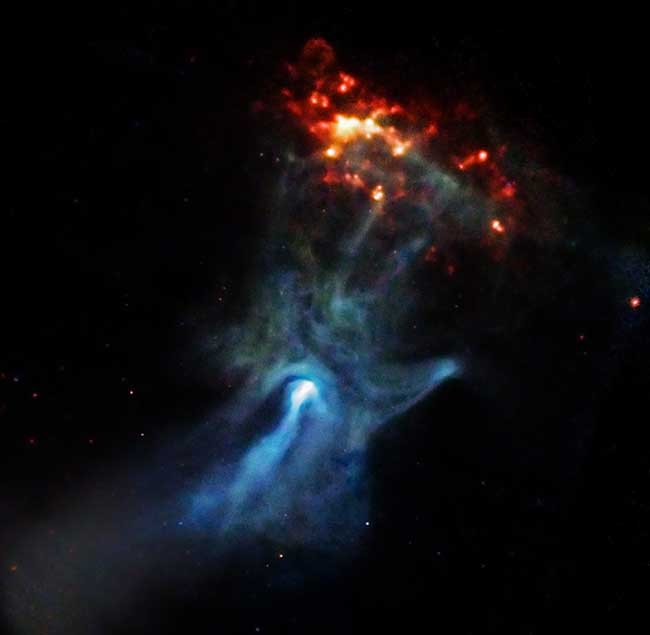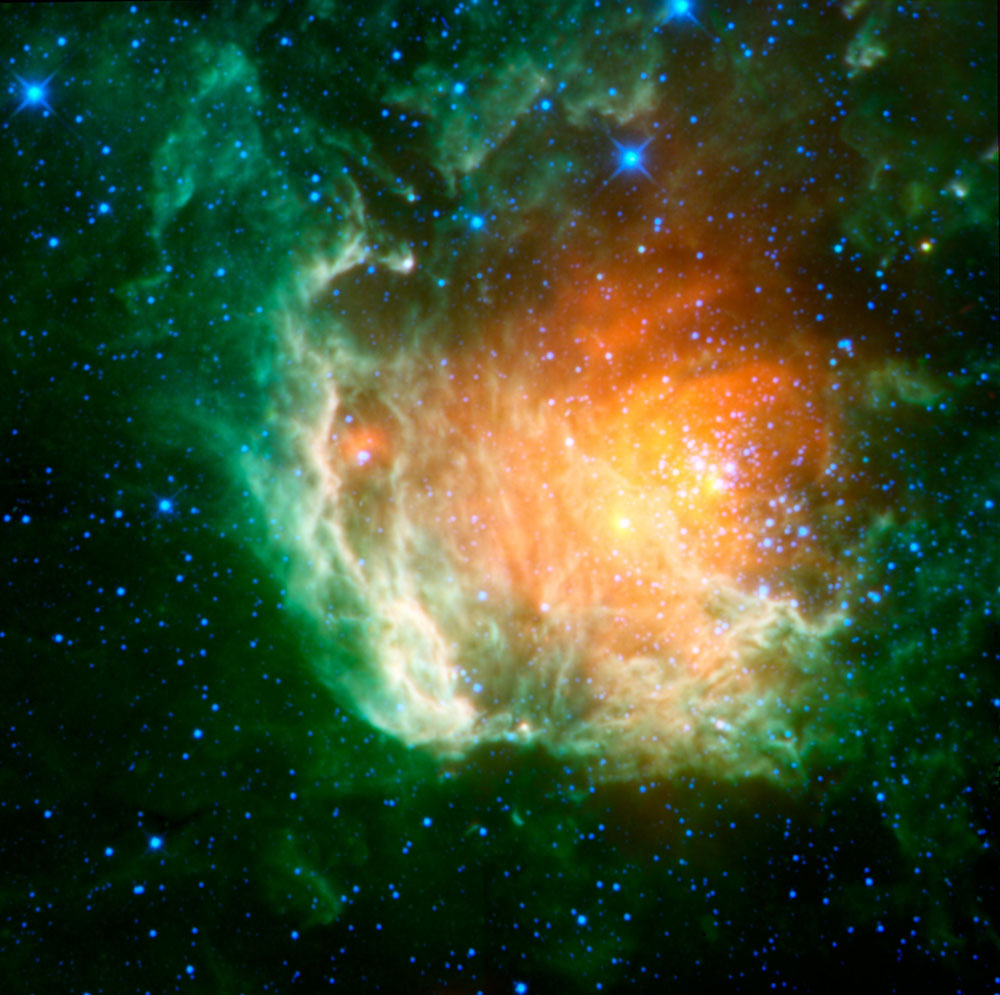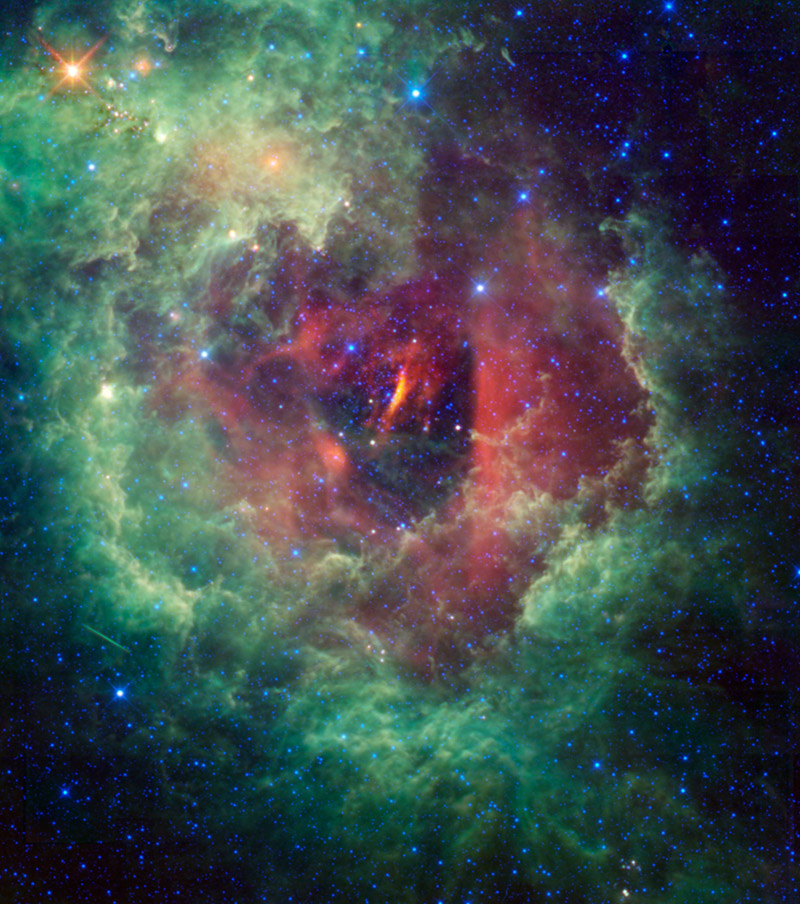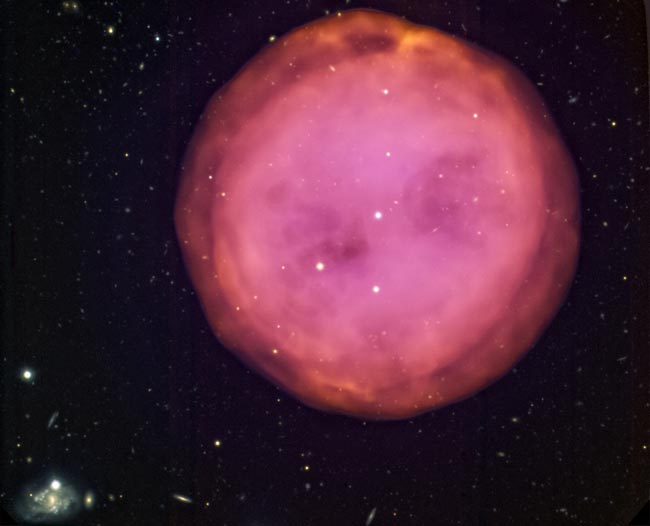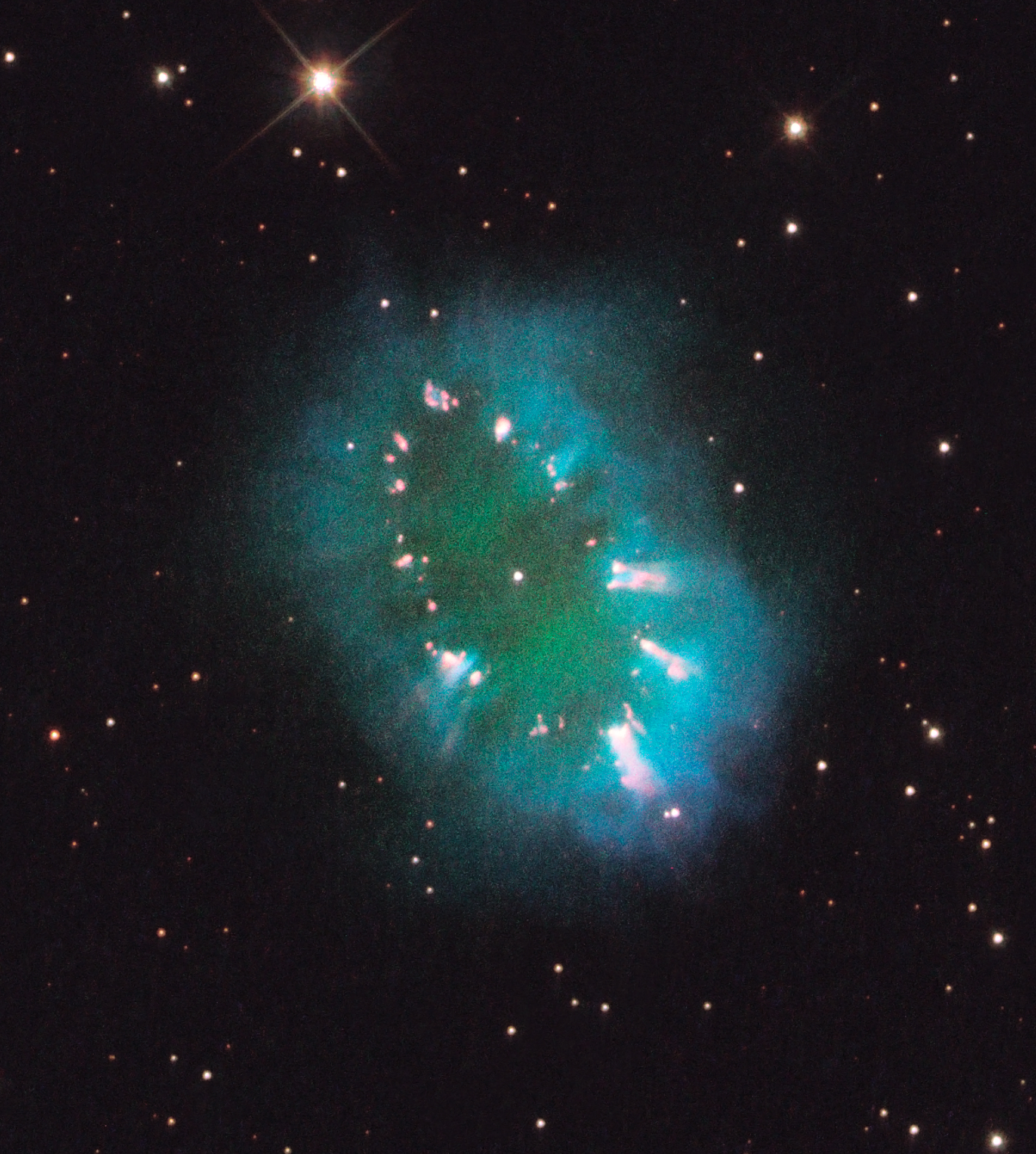Gallery: Strange Nebula Shapes, What Do You See?
'Diamond Ring'
Astronomers using ESO’s Very Large Telescope in Chile have captured this image of planetary nebula Abell 33. Image released April 9, 2014.
NASA Space Telescope Sees 'Hand of God'
The hand might look like an X-ray from the doctor's office, but it is actually a cloud of material ejected from a star that exploded. NASA's NuSTAR spacecraft has imaged the structure in high-energy X-rays for the first time, shown in blue. Lower-energy X-ray light previously detected by NASA's Chandra X-ray Observatory is shown in green and red. [Read the Full Story Behind the Image]
Rosette Nebula by Brian Davis
The Rosette Nebula, also know as Caldwell 49 or NGC 2237, is located roughly 5,000 light years away at the edge of the molecular cloud Monoceros, or the Unicorn constellation. Astrophotographer Brian Davis captured this photo from Sumter, S.C on Jan. 28, 2012. The image was released to SPACE.com on Oct. 8. [Read the Full Story behind this photo here.]
Space Head
Do you see a woman's head in profile? Wispy tendrils of hot dust and gas glow brightly in this ultraviolet image of the Cygnus Loop Nebula, taken by NASA's Galaxy Evolution Explorer. [Full Story]
Fried Egg Nebula Cooks Up Star Science
This picture of the nebula around a rare yellow hypergiant star called IRAS 17163-3907 is the best ever taken of a star in this class and shows for the first time a huge dusty double shell surrounding the central hypergiant. The star and its shells resemble an egg white around a yolky centre, leading astronomers to nickname the object the Fried Egg Nebula. The image was released Sept. 28, 2011.
Cosmic Hand Reaches for the Light
Red represents low-energy X-rays, the medium range is green, and the most energetic ones are colored blue. The blue hand-like structure was created by energy emanating from the nebula around they dying star PSR B1509-58. The red areas are from a neighboring gas cloud called RCW 89.
Running Chicken Nebula
This new image from the Wide Field Imager on the MPG/ESO 2.2-metre telescope shows the Running Chicken Nebula, a cloud of gas and newborn stars that lies around 6,500 light-years away from us in the constellation of Centaurus (The Centaur).
Breaking space news, the latest updates on rocket launches, skywatching events and more!
NASA Telescope Spots Cosmic Rose in Deep Space
This infrared image from NASA's WISE space telescope shows a cosmic rosebud blossoming with new stars, including the Berkeley 59 cluster and a supernova remnant. Read the full story.
New Cosmic Photo Reveals Eye-Catching Rosette Nebula
A new image taken by NASA's Wide-field Infrared Survey Explorer (WISE) shows the Rosette nebula located within the constellation Monoceros (the Unicorn). This flower-shaped nebula is a huge star-forming cloud of dust and gas in our Milky Way galaxy, about 4,500-5,000 light-years away.
Owl Nebula Wins Student's Choice Photo Contest
Gemini North image of the planetary nebula M97, also known as the Owl Nebula, imaged by the Gemini Multi-Object Spectrograph (GMOS) as part of a Canadian contest for high school students. The approximately 6,000 year-old nebula is located about 2,600 light-years away, and has a diameter of about three light-years across. It is located in the constellation of Ursa Major (which contains the Big Dipper).
Necklace Nebula Seen by Hubble Space Telescope
The Necklace Nebula is located 15,000 light-years away in the constellation Sagitta (the Arrow). This composite image was taken on July 2, 2011 by the Hubble Space Telescope's Wide Field Camera 3.

Space.com is the premier source of space exploration, innovation and astronomy news, chronicling (and celebrating) humanity's ongoing expansion across the final frontier. Originally founded in 1999, Space.com is, and always has been, the passion of writers and editors who are space fans and also trained journalists. Our current news team consists of Editor-in-Chief Tariq Malik; Editor Hanneke Weitering, Senior Space Writer Mike Wall; Senior Writer Meghan Bartels; Senior Writer Chelsea Gohd, Senior Writer Tereza Pultarova and Staff Writer Alexander Cox, focusing on e-commerce. Senior Producer Steve Spaleta oversees our space videos, with Diana Whitcroft as our Social Media Editor.
